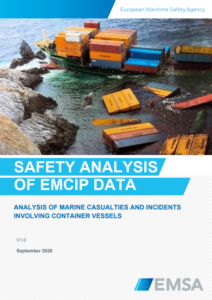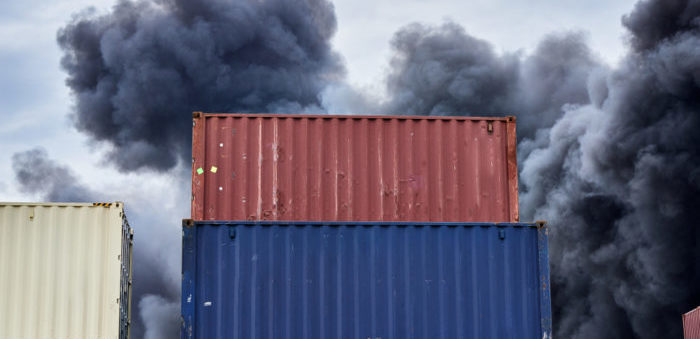EMSA shared the safety analysis of the European Marine Casualty Information Platform (EMCIP) data, in a context where container vessels have gained increasing visibility, providing an overview of the safety issue that have been reported between 2011 to 2019.
Accordingly, the relevance of looking at container vessels now is supported by the following rationale:
- the relevance of the fleet in terms of growth and ship size;
- the critical role of containerships for the intermodal economy; and,
- the public visibility of accidents involving container vessels, namely cargo fires, container losses and other non-ship-specific accidents. Notable examples of major marine casualties affecting container vessels include, amongst others, loss of control of Jolly Nero, fires on MSC Flaminia and Yantian Express, loss of control on Maersk Jaipur and loss of 342 containers by MSC Zoe.
This report is based on the full analysis and outlines the six vessel-specific issues that have been detected from various safety investigations:
- lack of proper cargo documentation;
- handling of specific goods;
- response to fire on containers;
- unsafe conditions leading to loss of containers;
- working practices to handle containers on board; and
- response of coastal Authorities following major marine casualties.
Conclusions
It is concluded that grounding is the safety area scoring the highest number of contributing factors (82) derived from 15 investigations. Approximately 60% of the reported contributing factors are concentrated around the following areas of concern (AoC):
- Use of electronic equipment, particularly ECDIS, ARPA, GPS or BNWAS (18%);
- Situational awareness in bridge operation (12%);
- Work methods for navigation and watchkeeping (10%);
- Preparation of passage plans (7%);
- Ergonomics and design standards (6%); and
- Crew management (6%).
Fifty-one contributing factors have been reported for collisions resulting from 18 investigations. Most of these factors (67%) belonged to the following areas of concern:
- Situational awareness in bridge operation (22%);
- Work methods for navigation and watchkeeping (12%);
- Workload and bridge resource management (10%);
- Risk assessment for specific operations (8%);
- Training and skills (8%); and
- External communication with other ships and parties (8%)
Twelve investigations concerning damage to ship or equipment included 51 contributing factors that appear concentrated around six areas of concern (67%):
- Conduction of maintenance (16%);
- Operation of shipborne equipment (14%);
- Ergonomics and design standard of ship’s component (12%);
- Failure due to wear (10%);
- Procedures for tests/maintenance (8%); and
- Wind (8%).
Thirty-six contributing factors have been reported in 12 investigations of fires/explosions, mostly in the following areas (58%):
- Emergency handling on board (33%) due to the emergency response of the crew and to the hardware functioning and its installation/design, particularly concerning the fixed fire extinguishers; and
- Cargo loading and handling (14%) due to missing or mis-declared documents concerning dangerous goods.
Twenty-one contributing factors relevant to loss of control/containment were included in 10 investigations. These factors appear more distributed across various safety issues.
- Ergonomics, design standard and installation of appliance used by crew member and other ship’s elements (28%);
- Communications, either on board or with third parties, like stevedores and terminals (20%); and
- Maintenance of critical equipment (19%).
Four safety investigations concerning contacts detected 13 contributing factors, mainly focused on the following areas of concern:
- Communications, either on board or with 3rd parties (38%);
- Situational awareness in bridge operations (15%); and
- Working with 3rd parties, especially with tugs and pilots (15%)
Concluding, to learn more click on the report herebelow































































